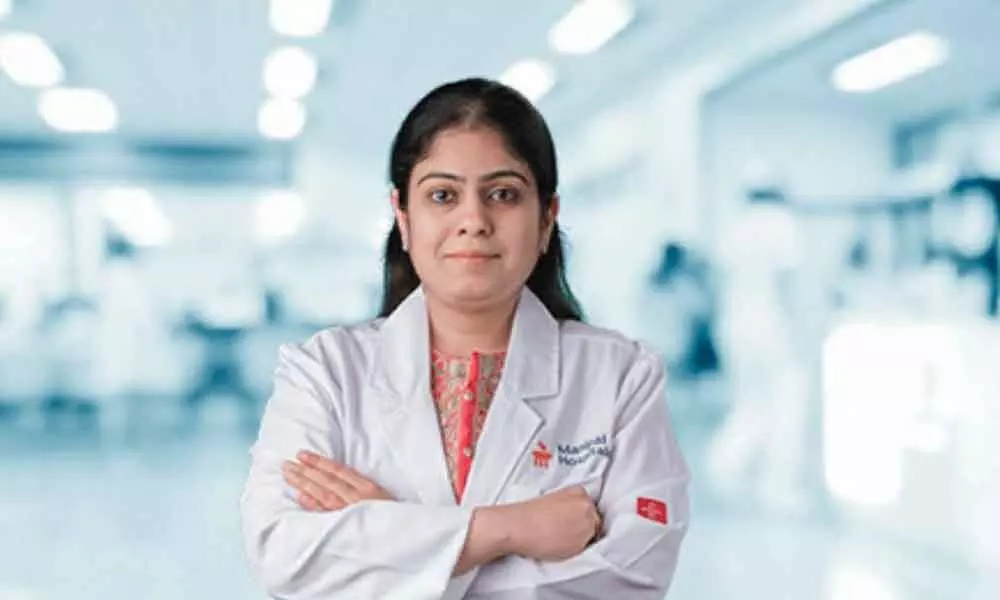Live
- ‘We can’t take things for granted’: Jayasuriya on balancing formats and Sri Lanka’s path to WTC final
- Prakash Ambedkar ready to 'power' the winner in Maha polls - Mahayuti or MVA
- BJP plans campaign against Cong govt
- Be lifelines to public & render best, cops told
- Siri 2.0: Apple's Advanced AI Assistant to Be Released in 2026
- Senegal ruling party wins parliamentary majority: Provisional results
- BJP flags plight of primary school
- Sensex surges 855 pts despite geo-political tensions, PSU bank stocks shine
- ED likely to question some Dubai-based Indians in Bengal ration scam case
- Minor quake hits Manipur's Bishnupur district
Just In
Covid-19 related to growing incidence of strokes


Covid-19 related to growing incidence of strokes
Stroke remains a leading cause of long-term morbidity although moratlity has decreased due to advancement in treatment.
Stroke remains a leading cause of long-term morbidity although moratlity has decreased due to advancement in treatment. Stroke is of two types: ischemic and haemorrhagic. In ischemic stroke, there is a blood clot in one of the larger or smaller blood vessels of the brain which prevents blood and oxygen from reaching the brain and this accounts for 85% of all strokes. Haemorrhagic stroke occurs when a blood vessel in the brain ruptures or leaks. In ischemic stroke, the brain tissue does not get sufficient oxygen and the brain cells begin to die. Stroke is one of the most common medical emergencies which requires prompt management and the patient should be immediately taken to a hospital having a comprehensive stroke care facility.
Recently, it has been observed that COVID-19 is related to an increased incidence of large vessel strokes and cryptogenic strokes (patients with no typical cause of stroke). The proposed mechanism for stroke in COVID-19 is a hypercoagulable state.
When a stroke patient arrives at the hospital, a stroke team is immediately activated. After clinical assessment of the patient, an emergency CT scan or MRI is done. The advantage of CT scan is that it can be done rapidly and can identify haemorrhagic stroke, however the disadvantage being that sometimes it may not identify ischemic stroke very early after onset. MRI has the advantage of identifying stroke within minutes of onset and can differentiate between the area of brain that is already dead and the area of brain which is under threat of dying but is salvageable, however it comes at the cost of time. In addition MR angiogram or CT angiogram is done to identify the blood vessel which is blocked.
Timely restoration of blood flow is the most effective maneuver for salvaging the ischemic brain because TIME IS BRAIN. It estimated that approximately 2 million neurons die every minute due to stroke.
Patients who are within the window period are thrombolysed wherein a drug is injected intravenously which helps in breaking or dissolving the blood clot. There is paradigm shift in the management of acute stroke with the availability of endovascular management. Patients with a major vessel occlusion are taken to an angio-suite where an angiogram is done and the occluded blood vessel is opened up by mechanical thrombectomy, wherein a stent is used to pull out the blood clot or thromboaspiration wherein the blood clot is sucked out with a catheter. If intervention is done timely, it helps in excellent recovery of patients, reduces morbidity and improves the quality of life.
We at Manipal Hospitals, Whitefield have a multidisciplinary integrated unit for handling stroke related care including emergency services, neurology, neurosurgery, neuroradiology, intervention and rehabilitation services.
(Dr Abha Verma,
Consultant Radiology, Manipal Hospitals, Whitefield

© 2024 Hyderabad Media House Limited/The Hans India. All rights reserved. Powered by hocalwire.com






